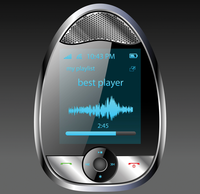Press Play
Enough audio players exist under Linux to fulfill everyone's wishes. If you find Amarok is too complicated and Rhythmbox or Audacious too old-fashioned, then there's a newcomer, Musique, that's well worth looking at.
|

achiartistul, 123RF.com
Enough audio players exist under Linux to fulfill everyone's wishes. If you find Amarok is too complicated and Rhythmbox or Audacious too old-fashioned, then there's a newcomer, Musique, that's well worth looking at.
Linux has long been recognized as a platform suitable for multimedia applications. Whether you're watching or editing movies or recording and playing music – the free operating system has something for everyone.
Because of all the new online services that have emerged in the last years, many audio players are now functionally armed to the teeth with features that are seldom used and often not used at all. The Musique newcomer, despite some smart ideas, limits itself to the essentials with an attractive graphical interface while also being quick as a flash. (See "Installing Musique" for installation details.)
Musique requires a locally stored music collection. So, you need to let the program know at the start where the audio files are located on your hard drive (Figure 1).
[...]
Pages: 2
The Ardour digital audio workstation has received quite a bit of acclaim within musical circles. The project has added even more enhancements to the new version.
Whether you're into audio, video, print, or something else, many projects are available for Linux to help you develop your artistic creativity. In this issue, we cover a few projects that stand out.
The media player Bangarang has qualities that could soon make it the default player for KDE. This latest release fixes a few bugs and is compatible with KDE 4.4.
The developers of Ubuntu One, the next Ubuntu release, are apparently planning a music store along the lines of iTunes.
© 2026 Linux New Media USA, LLC – Legal Notice